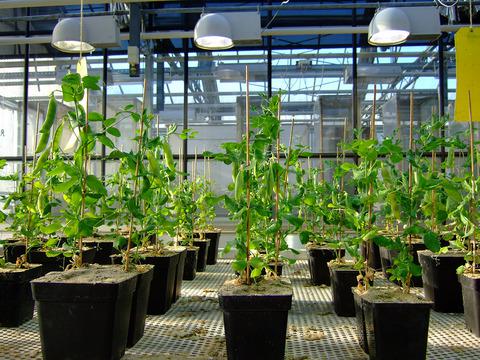当前位置:
X-MOL 学术
›
Funct. Ecol.
›
论文详情
Our official English website, www.x-mol.net, welcomes your
feedback! (Note: you will need to create a separate account there.)
The analysis of plant root responses to nutrient concentration, soil volume and neighbour presence: Different statistical approaches reflect different underlying basic questions
Functional Ecology ( IF 4.6 ) Pub Date : 2020-10-07 , DOI: 10.1111/1365-2435.13664 Bin J. W. Chen 1 , Heinjo J. During 2 , Peter J. Vermeulen 3 , Hans Kroon 4 , Hendrik Poorter 5, 6 , Niels P. R. Anten 3
中文翻译:

植物根系对养分浓度,土壤体积和邻居存在的反应分析:不同的统计方法反映了不同的基本问题
更新日期:2020-10-07
Functional Ecology ( IF 4.6 ) Pub Date : 2020-10-07 , DOI: 10.1111/1365-2435.13664 Bin J. W. Chen 1 , Heinjo J. During 2 , Peter J. Vermeulen 3 , Hans Kroon 4 , Hendrik Poorter 5, 6 , Niels P. R. Anten 3
Affiliation

|
- To investigate the responses of plants to their below‐ground neighbours independently of nutrient availability, experiments generally require a solitary treatment with one plant grown alone with one unit of nutrients, and a neighbour treatment with two plants grown together with two units of nutrients. This can either be done by doubling nutrient concentration (C) or by doubling soil volume (V) in the neighbour treatment as compared to the solitary treatment.
- Statistically analysing the same dataset from an experiment that grew plants in solitary or neighbour treatment with a series of V given a fixed amount of nutrients per plant (e.g. 1 g), Chen et al. (2015a) found significant neighbour effects when they controlled for V, while McNickle (2020) found the effects to be insignificant when he controlled for C.
- The discrepancy in the results of the two studies is caused by a difference in their analytical approaches. This includes (a) different choices of data transformation for the controlling factor, and (b) a mathematical deviation of model structures between V‐based and C‐based analyses, due to the different inversely proportional V‐C relationships between solitary
 and neighbour
and neighbour  treatments.
treatments. - Choices for either V or C as a controlling factor in the analyses for ‘neighbour effect’ are based on two different perspectives, focussing either on neighbour‐induced nutrient depletion (like McNickle, 2020) or on identity recognition (like Chen et al., 2015a).
- We also raise concerns about the use of mesh‐divided root interaction design and replacement series design in the studies of plant–plant root interactions. We propose to adjust the experimental designs and analytical methods based on the focal perspectives of neighbour effect.
中文翻译:

植物根系对养分浓度,土壤体积和邻居存在的反应分析:不同的统计方法反映了不同的基本问题
- 为了调查植物对地下邻居的响应而与养分的可利用性无关,实验通常需要单独处理一株单独种植一种营养素的植物,以及一种邻居处理时两种种植两种营养素的植物。与单独处理相比,这可以通过在相邻处理中将养分浓度(C)加倍或将土壤体积(V)加倍来完成。
- Chen等人统计分析来自一个实验的同一数据集,该实验使用一系列V给植物种植了单独或邻近处理的V,给定了每植物固定量的养分(例如1 g)。(2015a)当他们控制V时发现了显着的邻居效应,而McNickle(2020)当他控制C时发现了微不足道的影响。
- 两项研究结果的差异是由于它们的分析方法不同所致。这包括(a)控制因素的数据转换的不同选择,以及(b)由于单独处理和邻近处理之间的反比例V‐C关系不同,基于V和基于C的分析之间模型结构的数学偏差。


- 选择“ V”或“ C”作为“邻居效应”分析的控制因素是基于两种不同的观点,重点关注邻居诱发的营养耗竭(如McNickle,2020年)或身份识别(如Chen等人, 2015a)。
- 在植物-植物根系相互作用的研究中,我们还对使用网格划分的根系相互作用设计和替换系列设计提出了担忧。我们建议根据邻居效应的焦点观点调整实验设计和分析方法。











































 京公网安备 11010802027423号
京公网安备 11010802027423号